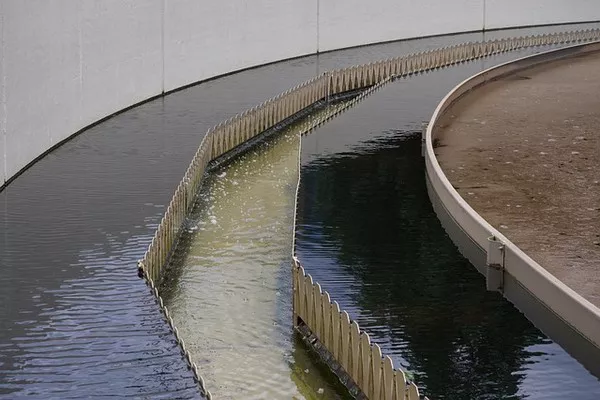Water is an indispensable resource, essential for the sustenance of life and economic development. However, the rapid pace of industrialization, urbanization, and population growth has led to an increase in wastewater generation, posing significant environmental challenges. Effective wastewater treatment is crucial to mitigate the adverse effects of water pollution and to ensure the availability of clean water for various uses. One of the fundamental stages in the wastewater treatment process is physical treatment, which plays a vital role in removing suspended solids and preparing the water for subsequent treatment stages.
What is Physical Treatment of Wastewater?
Physical treatment, also known as mechanical treatment, involves the use of physical processes to remove contaminants from wastewater. Unlike chemical or biological treatments, which rely on chemical reactions or microbial activity, physical treatment primarily uses physical forces such as gravity, screening, and filtration to separate solid particles from the liquid. This stage is often the first step in a multi-stage treatment process, aiming to reduce the load of suspended solids and organic matter before the water undergoes further treatment.
Key Processes in Physical Treatment
Screening
Screening is the initial step in the physical treatment of wastewater. It involves the use of screens with varying sizes of openings to remove large debris such as sticks, rags, leaves, and other coarse materials. These materials, if not removed, can damage pumps and other equipment in subsequent treatment stages. Screens can be classified into coarse screens, with larger openings, and fine screens, with smaller openings, depending on the level of filtration required.
Grit Removal
Following screening, the wastewater undergoes grit removal to eliminate inorganic particles like sand, gravel, and other heavy solids. Grit removal is essential to prevent the accumulation of these particles in pipes and tanks, which can lead to blockages and reduce the efficiency of the treatment process. Grit chambers are typically used for this purpose, where the wastewater flow is slowed down to allow heavier particles to settle at the bottom for removal.
Sedimentation
Sedimentation, also known as clarification, is a process that allows suspended solids to settle out of the wastewater by gravity. In a sedimentation tank or clarifier, the wastewater is held for a period, during which the heavier solids settle to the bottom, forming sludge. The clarified water, which contains fewer suspended solids, overflows from the top of the tank and is directed to subsequent treatment stages. Sedimentation is a critical process, as it significantly reduces the load on downstream biological or chemical treatment processes.
Flotation
Flotation is a process used to remove lighter particles, such as oils, fats, and greases, which do not settle easily by gravity. In dissolved air flotation (DAF) systems, air is injected into the wastewater under pressure. When the pressure is released, the air forms tiny bubbles that attach to the lighter particles, causing them to float to the surface. These particles are then skimmed off, leaving behind clarified water. Flotation is particularly useful in treating industrial wastewater containing oils and other light contaminants.
Filtration
Filtration is employed to remove fine suspended solids that remain in the wastewater after sedimentation and flotation. It involves passing the water through a porous medium, such as sand, gravel, or membrane filters, which traps the solid particles. Filtration can be classified into different types based on the size of the particles to be removed and the nature of the filtering medium. Sand filters are commonly used for removing larger particles, while membrane filters, such as microfiltration and ultrafiltration, are used for finer particles.
Importance of Physical Treatment
Physical treatment is a crucial component of the wastewater treatment process for several reasons:
Reduction of Suspended Solids
By effectively removing suspended solids, physical treatment reduces the turbidity of the wastewater, making it clearer and more manageable for subsequent treatment stages. This reduction in solids load also helps to enhance the efficiency of biological and chemical treatment processes.
Protection of Downstream Equipment
The removal of large debris, grit, and other solid materials prevents clogging and damage to pumps, pipes, and other equipment used in later stages of treatment. This protection is essential to maintain the operational efficiency and longevity of the treatment plant.
Improved Effluent Quality
By removing a significant portion of the contaminants, physical treatment improves the quality of the effluent, making it safer for discharge into water bodies or for reuse in various applications. This improvement is vital for protecting aquatic ecosystems and public health.
Cost-effectiveness
Physical treatment processes, such as screening and sedimentation, are relatively low-cost compared to chemical and biological treatments. Implementing these processes as initial treatment steps can reduce the overall cost of wastewater treatment by minimizing the need for expensive chemicals and reducing the energy requirements of biological processes.
Challenges and Innovations
While physical treatment processes are essential, they also come with certain challenges. For instance, the accumulation of sludge from sedimentation and flotation requires effective management and disposal. Moreover, the efficiency of physical treatment can be influenced by the variability in wastewater composition, necessitating adaptive and robust designs.
Innovations in physical treatment technologies aim to address these challenges. Advances in filtration technologies, such as the development of more efficient membrane filters and the integration of nanotechnology, have enhanced the ability to remove even finer particles from wastewater. Additionally, automated and intelligent screening systems are being developed to improve the efficiency and reliability of debris removal.
See Also Harnessing Algae in Sewage Treatment
Conclusion
The physical treatment of wastewater is a foundational step in the overall treatment process, providing essential benefits by removing suspended solids and protecting downstream equipment. By leveraging processes such as screening, grit removal, sedimentation, flotation, and filtration, physical treatment ensures that wastewater is adequately prepared for further treatment stages. Despite its challenges, ongoing innovations continue to enhance the effectiveness and efficiency of physical treatment, contributing to the sustainable management of wastewater and the protection of water resources. As the demand for clean water grows, the role of physical treatment in safeguarding this vital resource becomes increasingly important.

